The alignment of a diesel truck is incredibly important due to the weight of the truck, the significant miles that most owners put on their rigs, and the cost of tires.
If you use your truck to get into the woods for fun or need to get into a remote job site, you know the importance of good off-road tires. The deep treads of a mud terrain or the versatility of an all-terrain can be ruined quickly once something puts the truck out of alignment. You might as well be tossing money out the window, mile after mile. Plus, an out-of-alignment truck is going to wander all over the road, have unpredictable steering dynamics, and be a handful at highway speeds.
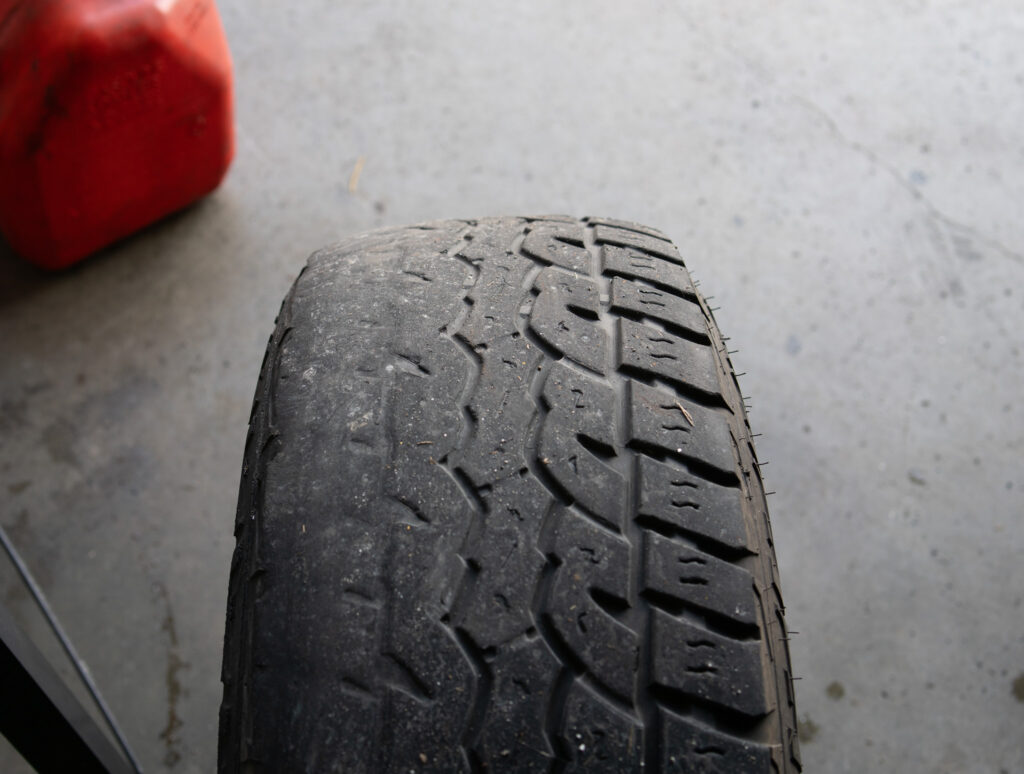
Common Terms in Truck Alignments:
Camber
Imagine your tire leaning slightly inward or outward when viewed from the front of your truck. That’s camber. Proper camber adjustment ensures even tire wear and stability, crucial for those hard-hitting highway miles.
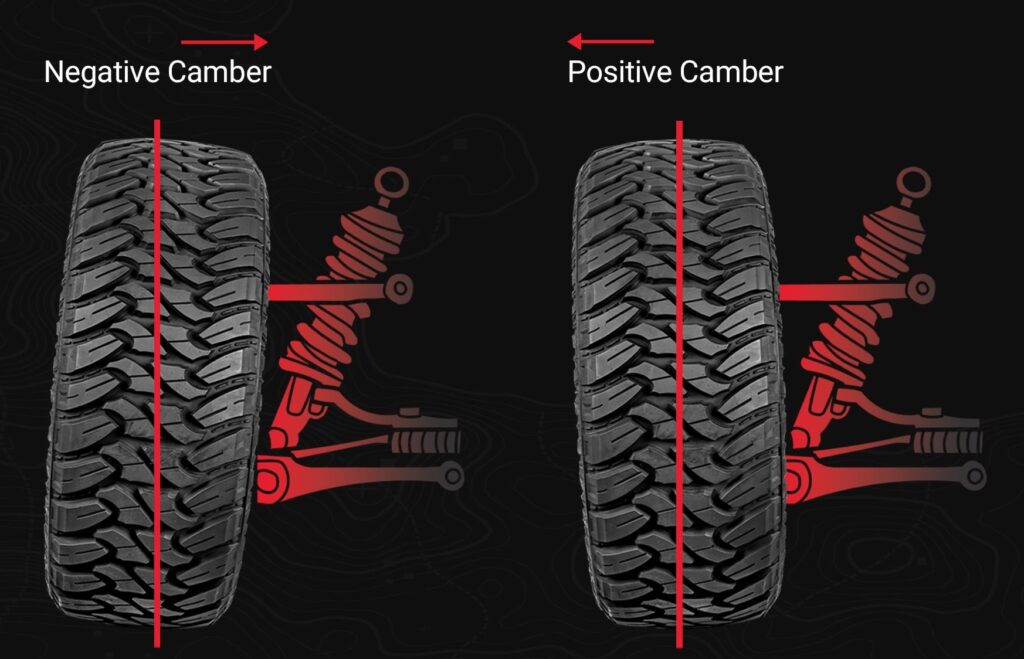
- Positive Camber: This occurs when the top of the tire leans outward from the vehicle’s centerline. Positive camber is often seen in vehicles where stability is prioritized over cornering performance, such as trucks or heavy-duty vehicles. It helps with load-bearing and stability when the vehicle is carrying heavy loads or towing.
- Negative Camber: In contrast, negative camber happens when the top of the tire leans inward toward the vehicle’s centerline. Negative camber is common in performance vehicles and sports cars. It improves cornering ability by maximizing tire contact with the road during turns, providing better grip and handling.
Caster
Ever felt like your truck’s steering has a mind of its own? That’s where caster comes into play. It’s all about keeping your truck pointed where you want it.
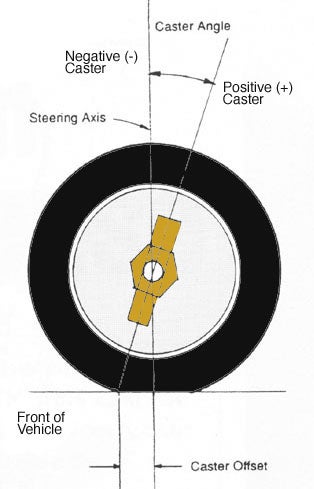
- Positive Caster: Positive caster occurs when the steering axis is tilted backward, meaning the top of the steering axis is positioned farther rearward than the bottom. This configuration is typical in most modern vehicles, where the steering axis tilts toward the rear of the vehicle. Positive caster provides stability and straight-line tracking, enhancing high-speed stability and return-to-center steering feel.
- Negative Caster: Negative caster, on the other hand, happens when the steering axis is tilted forward, with the top of the steering axis positioned farther forward than the bottom. Negative caster configurations are rare in automotive applications due to their adverse effects on stability and steering feel. Negative caster can result in poor straight-line stability and increased steering effort.
Toe
The angle your tires make when viewed from above. Just like a well-trained soldier, they should be marching in line. Proper toe alignment means fewer headaches and more miles out of any type of tire.
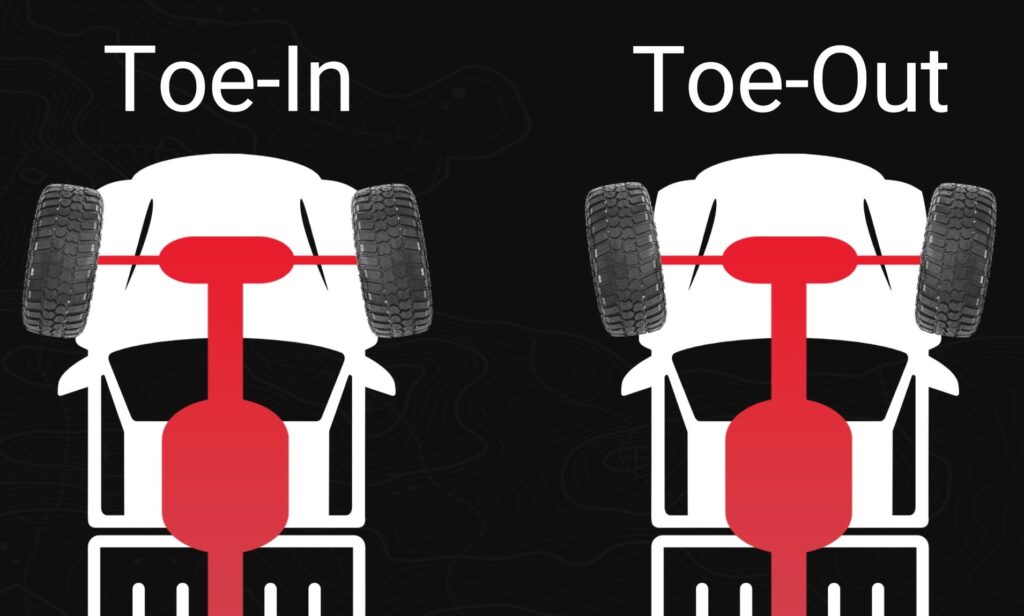
- Positive Toe: Positive toe occurs when the front edges of the tires are angled inward toward the vehicle’s centerline. This means that the distance between the front edges of the tires is less than the distance between the rear edges. Positive toe is often used to enhance straight-line stability and reduce the tendency for wandering on highways. However, excessive positive toe can lead to increased tire wear and can affect handling, especially during cornering.
- Negative Toe: Conversely, negative toe happens when the front edges of the tires are angled outward away from the vehicle’s centerline. Negative toe is sometimes used to improve cornering performance and steering response by promoting a quicker turn-in. However, too much negative toe can also lead to uneven tire wear and reduced straight-line stability.
Now, let’s peek under the truck. In a solid axle configuration, components like the control arms, bushings, and steering linkage play a crucial role. Any wear or damage to these parts can throw off your alignment faster than you can say “off-road adventure.”
When a truck is lifted, all these factors also need to be considered and we perform an alignment after any aftermarket suspension components are installed. Most kits that we install come with all the necessary parts to end up at a correct geometry, thanks to aftermarket shims, adjustable controls arms and offset bushings.
So, along with checking those tire angles, it’s essential to inspect these components regularly to ensure everything stays in line. If you want to get extra nerdy, we love the info at Suspension Secrets (even if it is mostly written from a racing perspective)
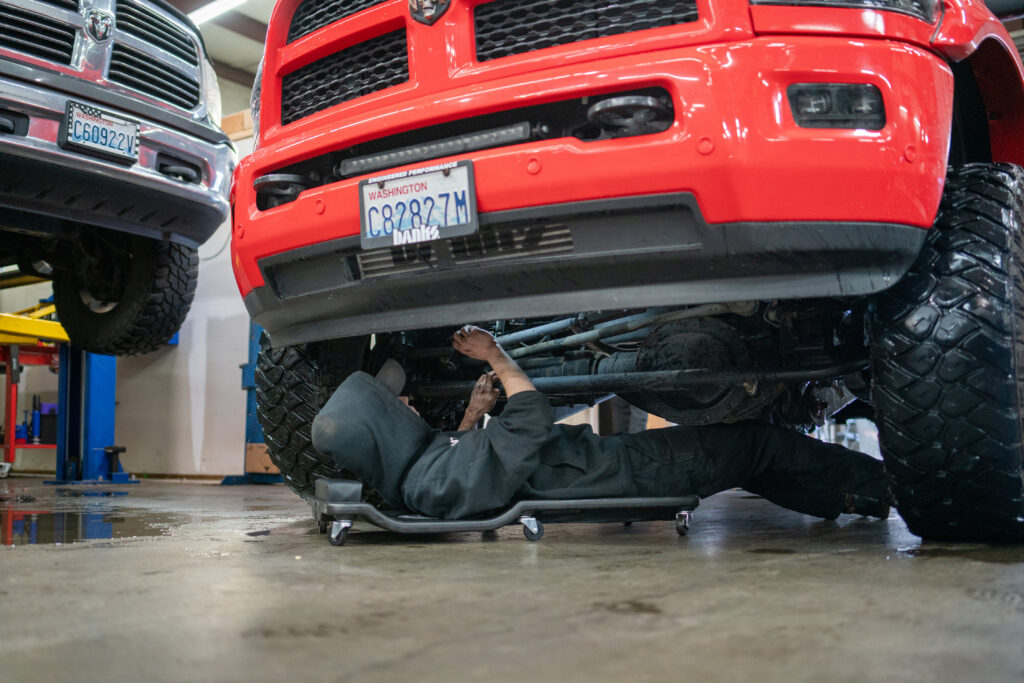
Whether you’re tearing up the highway or conquering rugged trails, don’t overlook your truck’s alignment. It’s the key to safeguarding your investment and ensuring your journeys remain smooth and enjoyable. Schedule an alignment check today as apart of your routine service and maintenance for your truck!
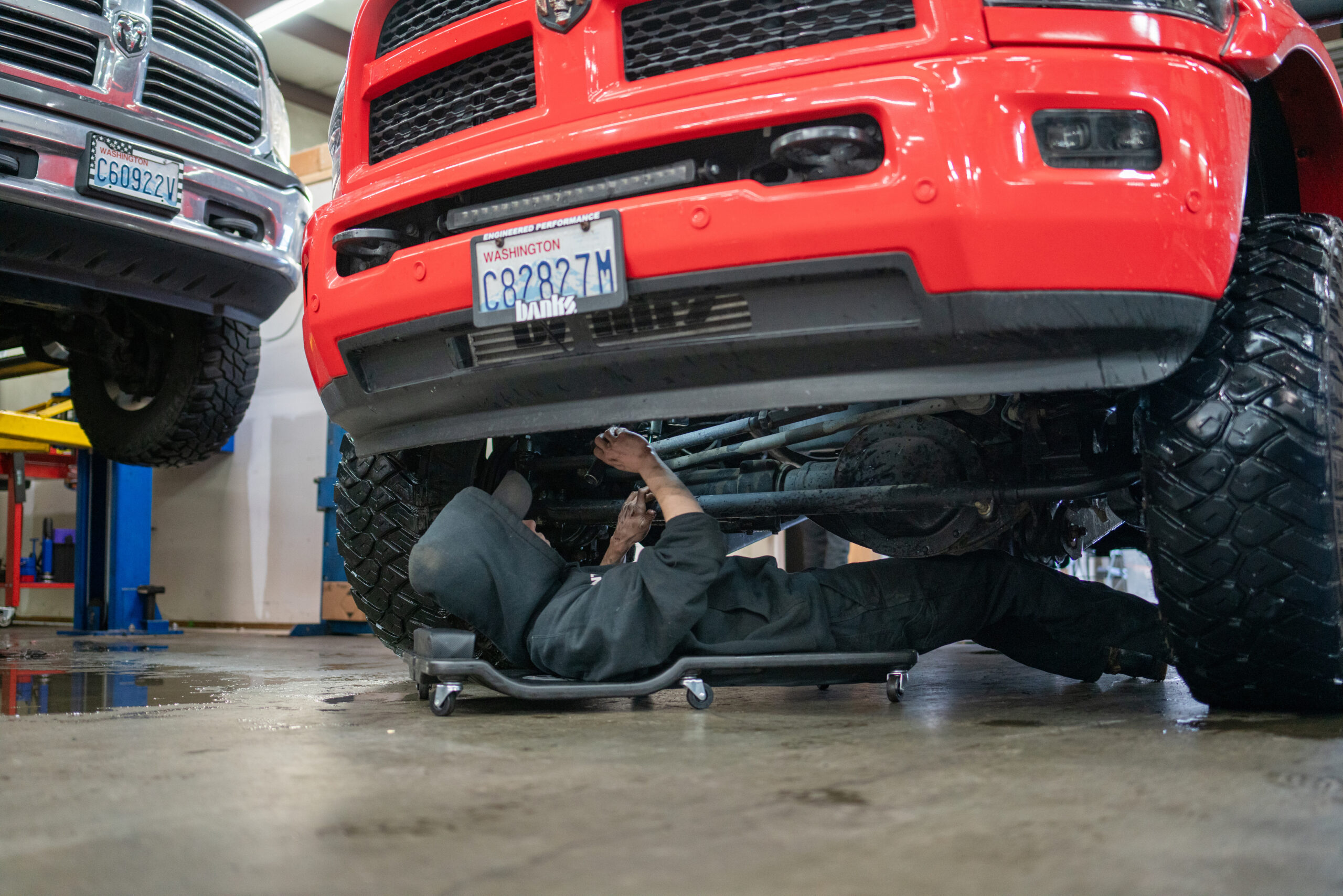
Be The First To Comment